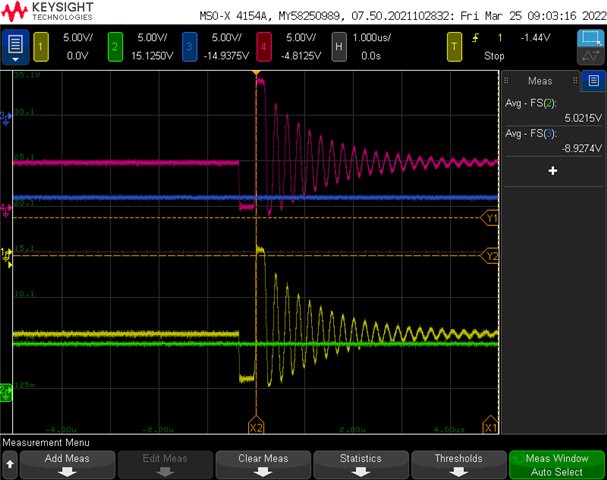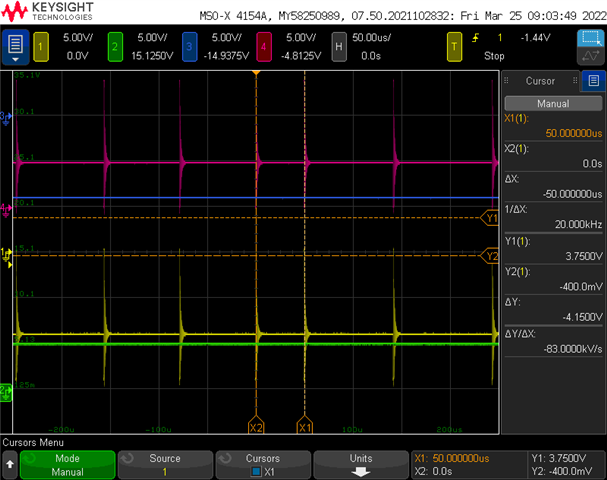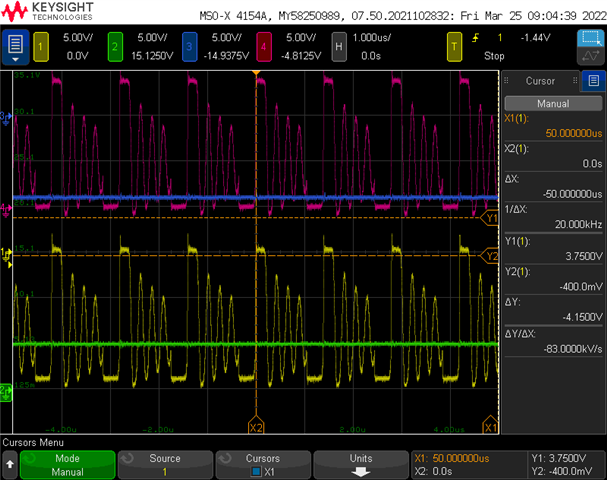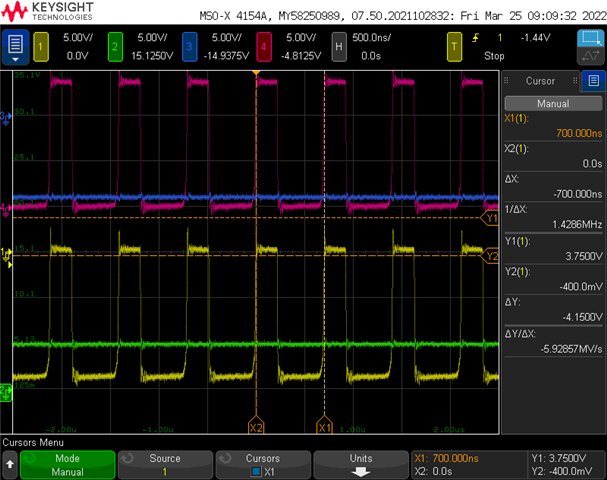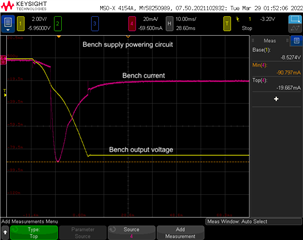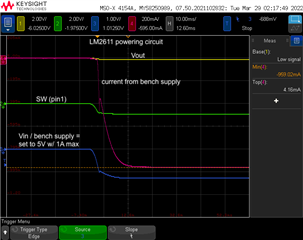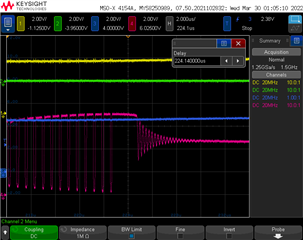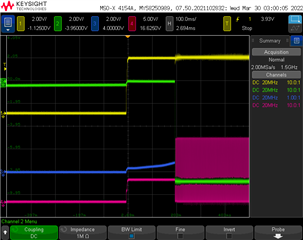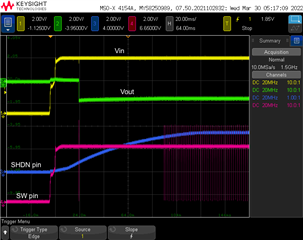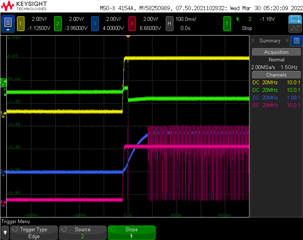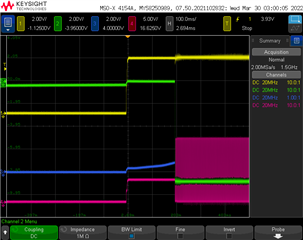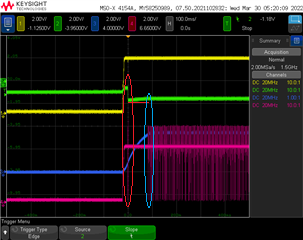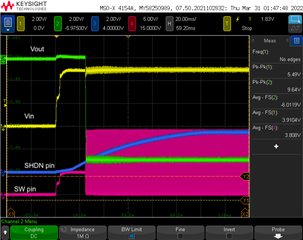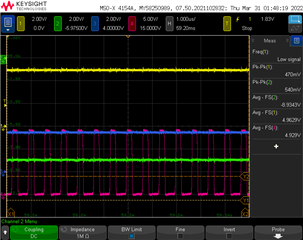Other Parts Discussed in Thread: ALLIGATOR
We have the following LM2611 circuit below that is powering a circuit that has a current consumption between 20mA and 80mA (verified by removing the LM2611 and using a bench supply). When we use a bench supply set to 5V and 1A max as Vin for the LM2611, the current limit is instantly hit. The circuit draws 1 A with the bench voltage sitting around 2 V (since the bench supply current limit is hit).

Below is from the LM2611 circuit when it is is disconnected from the circuit and instead has resistors loads.
